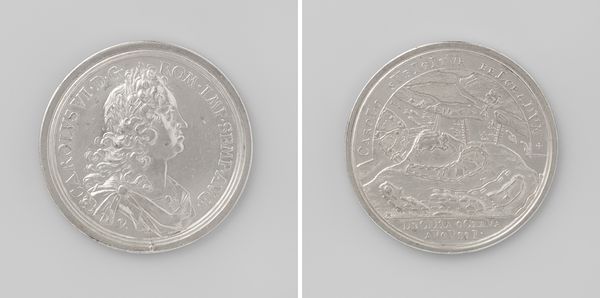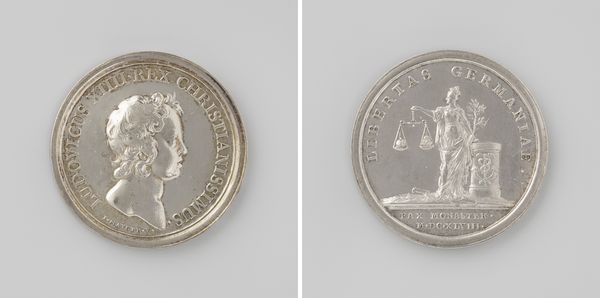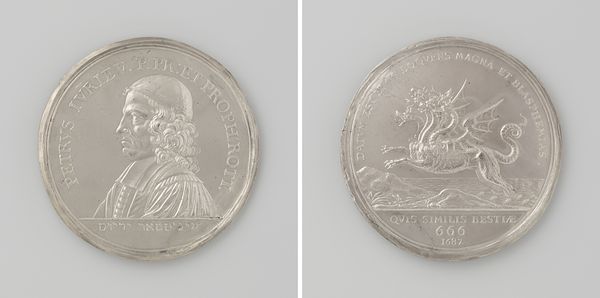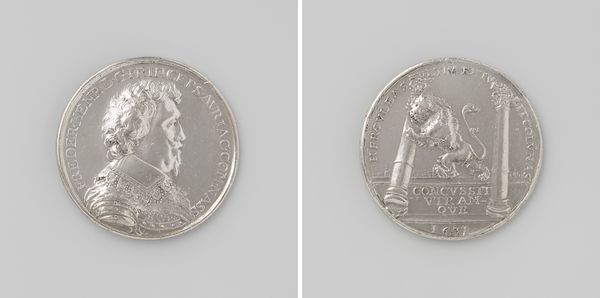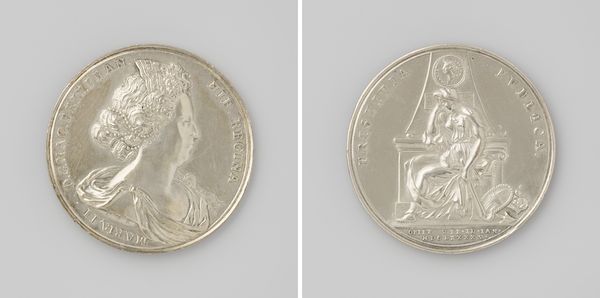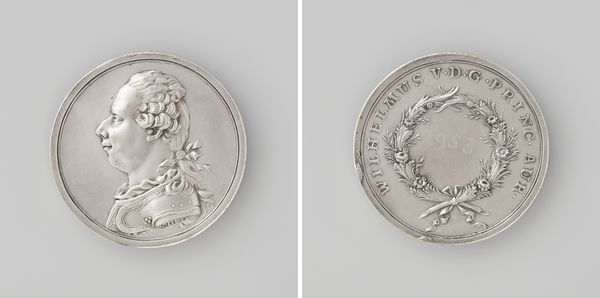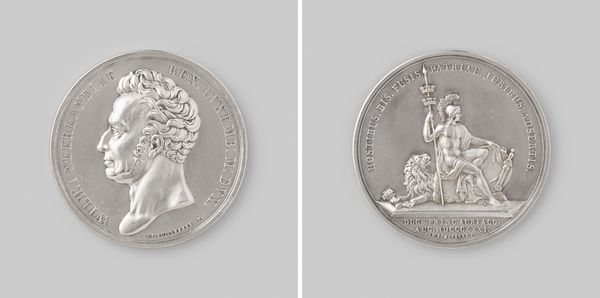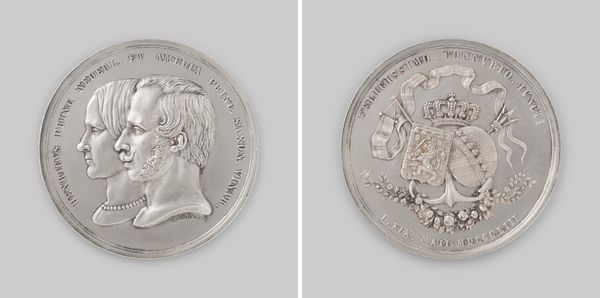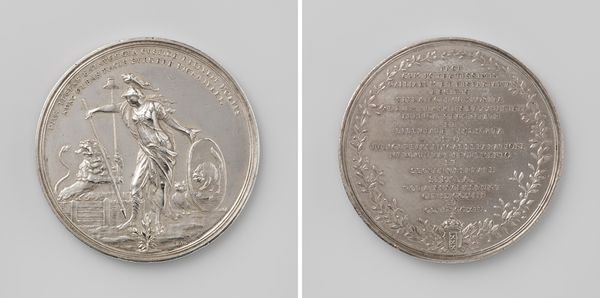
Vrede van Luneville, ter ere van Karel Lodewijk Johan, aartshertog van Oostenrijk, landvoogd der zuidelijke Nederlanden 1801
0:00
0:00
metal, relief, sculpture
#
portrait
#
neoclacissism
#
metal
#
relief
#
sculptural image
#
sculpture
#
ceramic
#
history-painting
Dimensions: diameter 4.2 cm, weight 22.22 gr
Copyright: Rijks Museum: Open Domain
Curator: Vrede van Luneville, made in 1801 by Anton Guillemard. It's a medal made from metal using the relief technique. Editor: Yes, the crisp details and classical motifs certainly give it a formal and commemorative feel. I'm particularly curious about the figures and symbols used. How do you interpret this work within its historical context? Curator: Given the subject matter – the Peace of Lunéville – and the prominence of Karel Lodewijk Johan, Archduke of Austria, this medal must be understood within the turbulent backdrop of Napoleonic Europe. But more broadly, let’s consider the concept of "peace" as depicted here. What narratives are privileged, and which are suppressed? Who gets to define "peace" and whose voices are silenced in the process? Editor: That's a great point. The classical imagery, while referencing an idealized past, perhaps masks the brutal realities of war and the power dynamics at play during this era. Curator: Precisely. The relief idealizes a moment of peace but arguably neglects the perspectives of marginalized groups impacted by ongoing conflict and shifting political boundaries. Consider, too, that the act of memorializing an individual like Archduke Charles through a medal participates in constructing and reinforcing particular forms of power and remembrance. To whom does history give agency, and why? Editor: It is really interesting how an object created to promote peace can hide a darker, exclusionary reality. Curator: Right. By analyzing this medal through the lens of power dynamics and social justice, we uncover how Neoclassical aesthetics intersect with the political agendas of the time, offering a more nuanced perspective on the complexities inherent in the creation and commemoration of peace. Editor: I am starting to view such historic work less for what it displays and more as a document that informs us about its socio-political ecosystem. Curator: Exactly. The medal is no longer a celebration; rather it's a powerful historical critique.
Comments
No comments
Be the first to comment and join the conversation on the ultimate creative platform.
